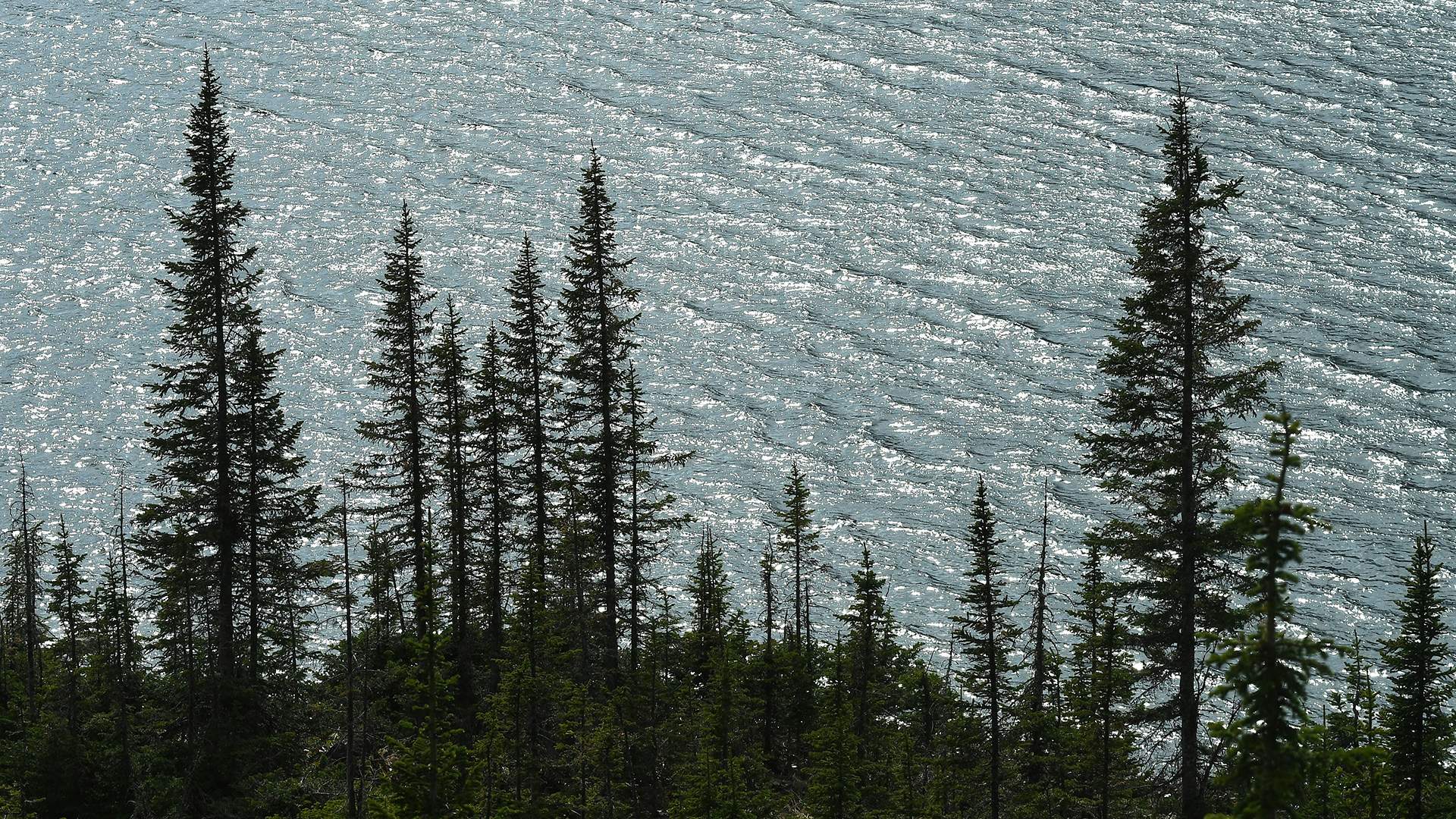- Статьи
- Science and technology
- Ecosystem approach: Ancient mosquitoes will talk about disasters and climate change
Ecosystem approach: Ancient mosquitoes will talk about disasters and climate change

Scientists have traced the climatic changes in Eastern Siberia over the past 2,000 years by analyzing ancient pollen, plankton, and insect remains in the sediments of Lake Zapovednoye in the Krasnoyarsk Territory. The reservoir is located on the border of permafrost, where natural metamorphoses are reflected more strongly. It is also located near the epicenter of the Tunguska meteorite explosion. Experts have determined that the consequences of the catastrophic event persisted for half a century. At the same time, scientists have identified the onset of the medieval climatic optimum, the Little Ice Age and modern warming. Experts noted that bottom soil core analysis is a promising technique that provides a large amount of information.
What is remarkable about Lake Zapovednoye?
Scientists from Siberian Federal University (SFU) and the Institute of Biophysics SB RAS have reproduced how the explosion of the Tunguska meteorite affected the ecosystems of Lake Zapovednoye near the epicenter of this event. The specialists also reconstructed the climatic history in the vicinity of the reservoir based on bioindicators in bottom sediments. This is the first time such a study has been conducted in this area.
— The technology is based on a number of original techniques developed by Russian scientists. They are based on the analysis of sediments that accumulate at the bottom of lakes. The remains of ancient flora and fauna serve as biological markers. For example, particles of pollen from ancient plants, diatoms, remains of mosquitoes, crustaceans that existed in the past," Denis Rogozin, professor of the Department of Biophysics at SibFU, Deputy Director for Science and a leading researcher at IBF SB RAS, Doctor of Biological Sciences, told Izvestia.

He added that experts had tested the proposed method on Lake Zapovednoye, a freshwater reservoir located in a remote area of the Krasnoyarsk Territory on the Central Tunguska Plateau between the Lena and Yenisei rivers. This reservoir is located on the border of permafrost, which is of particular interest, since climate change is more strongly reflected in such objects.
The lake is also notable for the fact that in 1908, a natural phenomenon occurred near it (70 km north of the reservoir), which is now commonly called the Tunguska event, a powerful explosion in the Earth's atmosphere caused by the fall of a large celestial body — an asteroid or comet.
As the scientist explained, any metamorphosis in the environment has an impact on ecosystems. For example, changes in the chemical composition of water and the transparency of water, an increase or decrease in the temperature of a reservoir can trigger a decrease or increase in populations of species living in them.
Then the remains of organisms settle to the bottom and are preserved in silt deposits. In this form, especially in freshwater reservoirs, they can remain unchanged for thousands of years. And if you extract samples of the bottom soil while preserving its structure, you can restore the entire history of the ecosystem and the factors that influenced it.
How information does the remains of aquatic organisms contain
According to the scientist, bottom core sampling is a complex procedure that requires special equipment. The technology resembles pile driving. Usually, such an operation is performed in the deepest parts of the reservoir, where sediments accumulate more evenly and are less susceptible to mixing.
Well—studied bioindicators are diatoms, the researcher said. These are planktonic unicellular organisms. In addition, information about the state of ecosystems can be provided, for example, by cladoceran crustaceans, daphnia, which are also sometimes called water fleas. Or chironomids, the bell—shaped mosquitoes, whose larvae are abundant in the water. Plant pollen is also a valuable "witness" of bygone eras.
Each of the biological species, the expert specified, has its own ecological preferences and reacts differently to changing conditions. Therefore, depending on the external circumstances that prevailed in a particular period, the number and composition of remains in the bottom soil varies significantly. This makes it possible to reconstruct the climate history in the vicinity of the reservoir with high accuracy.
At the same time, the thickness of the bottom sediments of Lake Zapovednoye, according to seismic data, is about 4 m. This suggests that the reservoir was formed several millennia ago. During the analysis, scientists traced the changes that have occurred in the lake over the past 22 centuries.
— For example, a decrease in fir pollen in samples and the appearance of larch pollen is an argument in favor of cooling. Or, if organisms that tend to live in stagnant reservoirs have replaced species that prefer running water, then we can say that the flow of rivers into the lake has decreased and there has been a transition from a wetter period to a cold and dry one," explained Denis Rogozin.
However, he added, the appearance of sedge pollen may mean that the lake was swamped during a certain period. The same conclusion can be drawn if the samples show an increase in species that tend to live among aquatic vegetation.
According to the researcher, in the course of scientific work, scientists have traced the changes associated with the medieval climatic optimum, the little Ice Age and modern warming. Experts paid special attention to the samples that coincided with the moment of the fall of the Tunguska meteorite.
In particular, in these layers, scientists have recorded an increased content of substances that were washed into the lake due to soil erosion due to the fall of a large number of trees. At this time, a large amount of substances got into the lake and the organisms that love muddy water gained an advantage. According to the data obtained, the stabilization of the ecosystem occurred only 50 years after the disaster.
Studying ancient DNA and lake productivity
— Among other things, DNA fragments can be extracted from the remains of animals and plants preserved in sediments, which is also an important source of information. At the same time, their safety is affected by various conditions. For example, temperature, salinity, acidity, chemical composition and particle size," said Sergey Kirilchik, head of the Evolutionary Genetics group at the Limnological Institute of the Siberian Branch of the Russian Academy of Sciences.
According to the expert, such studies are hampered by the significant fragmentation of ancient DNA and their contamination with modern molecules that carry genetic information. Moreover, the degree of degradation of ancient DNA increases with depth. So far, it has been possible to study samples up to 100 thousand years old with a high degree of reliability. There are studies on the analysis of millennial DNA, but they are unreliable.
— Bottom cores from lake sediments are a treasure trove of information about the past. However, it should be noted here that not all groups are equally well preserved in bottom sediments, and the evolutionary process could lead to a change in the requirements of individual species to environmental conditions. An equally important problem is the choice of a place to take the core. The number of species of some groups that lived in the past at the sampling site may be very low, or they may be absent altogether. This complicates the interpretation of the data or even leads to incorrect conclusions," said a researcher at the Microbiology Laboratory at the I.D. Institute of Biology of Inland Waters. Papanina RAS Vladimir Sysoev.
To solve this problem, he explained, scientists are conducting simultaneous studies of several groups of organisms, which makes it possible to more reliably identify the most significant changes in environmental conditions and improve the quality of paleoreconstruction results. If the number of species is high, then by examining different groups of organisms, we can reconstruct not only climate changes, but also the depth of the reservoir, its abundance, the amount of aquatic vegetation, the degree of saturation of reservoirs with biogenic elements and their productivity.
At the same time, the data obtained in recent decades make it possible to fairly objectively assess the degree of human influence on natural ecosystems and improve the accuracy of forecasts of their condition in the future, the expert concluded.
Переведено сервисом «Яндекс Переводчик»






